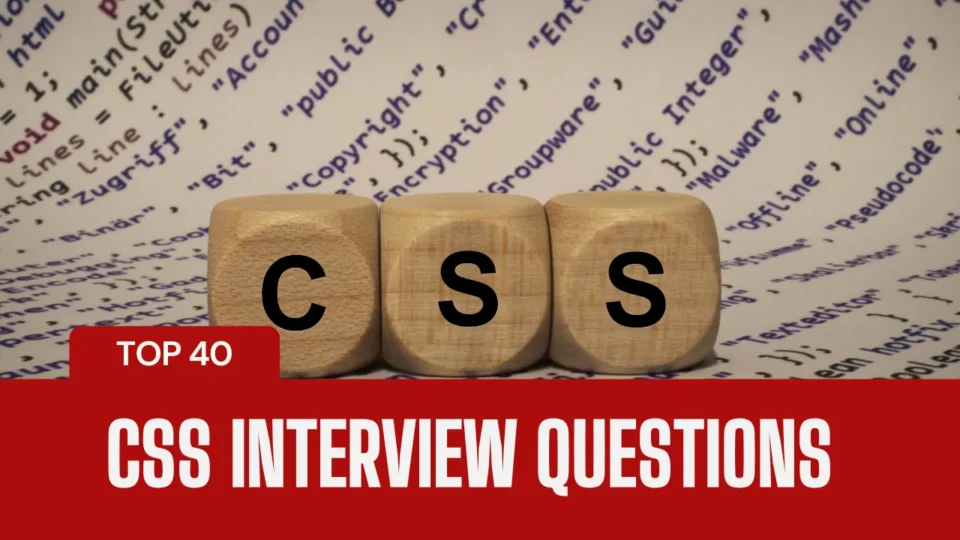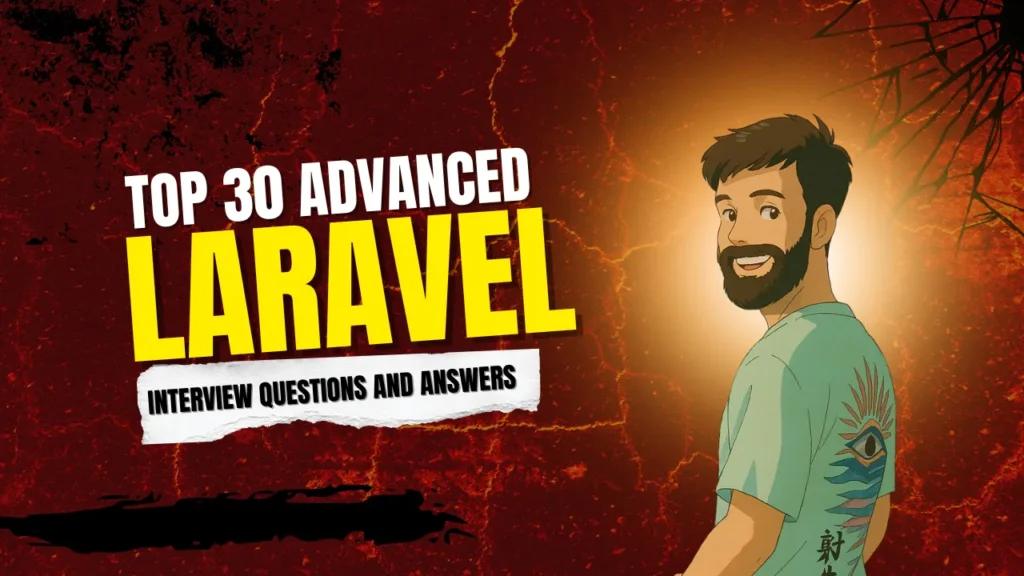Here are the Top 40 Advanced CSS Interview Questions and Answers that can help you prepare for front-end development interviews in 2025, covering deep CSS concepts, performance, architecture, and real-world application:
Top 40 Advanced CSS Interview Questions and Answers
🔹 1. What is the difference between em, rem, %, and px in CSS?
px: Absolute unit (e.g., 16px is always 16 pixels).em: Relative to the parent element’s font size.rem: Relative to the root element’s font size.%: Relative to the parent container.
🔹 2. How do you create a responsive layout in CSS without media queries?
- Use flexbox, grid, clamp(), min(), max(), or fluid typography techniques like:
font-size: clamp(1rem, 2vw, 3rem);
🔹 3. Explain specificity in CSS.
- It determines which rule is applied when multiple rules match the same element.
- Order of precedence:
- Inline styles > IDs > Classes > Elements
- Calculated as a 4-value tuple (a,b,c,d):
#id= (0,1,0,0).class= (0,0,1,0)element= (0,0,0,1)
🔹 4. What is the difference between visibility: hidden and display: none?
visibility: hiddenhides the element but still takes up space.display: noneremoves the element from the document flow.
🔹 5. What is a pseudo-element in CSS?
- Used to style specific parts of an element:
p::first-line, div::before, div::after
🔹 6. What is the stacking context in CSS?
- A 3D conceptual hierarchy where elements are layered.
- Created with
position,z-index,opacity < 1,transform, etc.
Top 40 Advanced CSS Interview Questions and Answers
🔹 7. How does the z-index work?
- Controls vertical stacking order.
- Only works on positioned elements (
relative,absolute,fixed, orsticky).
🔹 8. What are initial, inherit, and unset in CSS?
initial: Resets to browser’s default value.inherit: Inherits from parent.unset: Resets to inherited if naturally inheritable, otherwise initial.
🔹 9. How do CSS Grid and Flexbox differ?
- Flexbox: One-dimensional (row or column).
- Grid: Two-dimensional (rows and columns).
🔹 10. What are media queries and how do they work?
- CSS rules based on viewport/device characteristics.
@media (max-width: 768px) { body { font-size: 14px; } }
🔹 11. What is the difference between relative, absolute, fixed, and sticky positioning?
relative: Offset from original position.absolute: Positioned to nearest non-static ancestor.fixed: Positioned relative to viewport.sticky: Switches between relative and fixed based on scroll.
🔹 12. What is the contain property in CSS?
- Used for CSS containment to optimize rendering:
.card { contain: layout style; }
Top 40 Advanced CSS Interview Questions and Answers
🔹 13. What are custom properties (CSS variables)?
- Reusable values defined with
--::root { --main-color: #333; }
🔹 14. How to prevent layout shifts in CSS?
- Always define height/width.
- Use aspect-ratio.
- Avoid images without dimensions.
🔹 15. How do you center an element vertically and horizontally?
Flexbox way:
.parent {
display: flex;
justify-content: center;
align-items: center;
}
🔹 16. What is the difference between min-width, max-width, and width?
width: Fixed size.min-width: Minimum allowed width.max-width: Maximum allowed width.
🔹 17. What is calc() in CSS?
- Performs calculations:
width: calc(100% - 60px);
🔹 18. What is clamp() in CSS?
- Sets a value between min, preferred, and max:
font-size: clamp(1rem, 2vw, 2rem);
Top 40 Advanced CSS Interview Questions and Answers
🔹 19. How do transitions and animations differ in CSS?
- Transitions: Animate between states.
- Animations: Can be looped and controlled using
@keyframes.
🔹 20. How to optimize CSS for performance?
- Minify files
- Use shorthand
- Avoid deep nesting
- Eliminate unused styles
- Use critical CSS for above-the-fold
🔹 21. What is a BEM (Block Element Modifier)?
- CSS naming convention:
.btn--primary, .card__title
🔹 22. How do you make a sticky header?
header {
position: sticky;
top: 0;
z-index: 1000;
}
🔹 23. What is the will-change property?
- Hint for browser optimizations:
.element { will-change: transform; }
🔹 24. How does the box-sizing property affect layout?
content-box: Default, padding and border add to width.border-box: Includes padding and border in declared width.
🔹 25. What is the difference between nth-child and nth-of-type?
nth-child(n): Matches the nth child regardless of tag.nth-of-type(n): Matches the nth element of a type.
Top 40 Advanced CSS Interview Questions and Answers
🔹 26. What is reflow and repaint in CSS rendering?
- Reflow: Affects layout → expensive.
- Repaint: Affects appearance (e.g., color).
🔹 27. What’s the use of object-fit?
- Controls image scaling in containers:
img { object-fit: cover; }
🔹 28. How to apply styles to only the first row/column in a table?
table tr:first-child { background: #eee; }
table td:first-child { font-weight: bold; }
🔹 29. How can you hide elements but make them accessible to screen readers?
.hidden-accessible {
position: absolute;
left: -9999px;
}
🔹 30. How to use attribute selectors in CSS?
input[type="text"] { background: #eee; }
🔹 31. What is a media feature in CSS?
- A condition inside a media query (e.g.,
min-width,orientation,prefers-color-scheme).
🔹 32. How to create a triangle with CSS?
.triangle {
width: 0; height: 0;
border-left: 10px solid transparent;
border-right: 10px solid transparent;
border-bottom: 10px solid red;
}
🔹 33. What is the difference between inline, block, and inline-block?
inline: No height/width, respects flow.block: Takes full width.inline-block: Like inline but allows size.
🔹 34. What is :has() in CSS?
- Parent selector (modern browsers):
div:has(> input:checked) { border: 1px solid green; }
🔹 35. How does mix-blend-mode work?
- Blends an element with its background:
.blend { mix-blend-mode: multiply; }
🔹 36. Explain isolation: isolate in CSS.
- Creates a new stacking context to avoid blend-mode effects.
🔹 37. What is the use of aspect-ratio in CSS?
.card {
aspect-ratio: 16 / 9;
}
🔹 38. What is CSS Houdini?
- Low-level APIs that allow developers to extend CSS via JavaScript (e.g., Paint API, Typed OM).
🔹 39. How to avoid flash of unstyled content (FOUC)?
- Use proper preload links
- Avoid delayed style loading
- Use server-side rendering for critical CSS
🔹 40. What’s the difference between logical and physical properties in CSS?
- Physical:
margin-left,padding-top - Logical:
margin-inline-start,padding-block-end— better for internationalization (RTL support).
Top 40 Advanced CSS Interview Questions and Answers
Table of Contents
Top 40 Advanced CSS Interview Questions and Answers
Top 40 Advanced CSS Interview Questions and Answers



